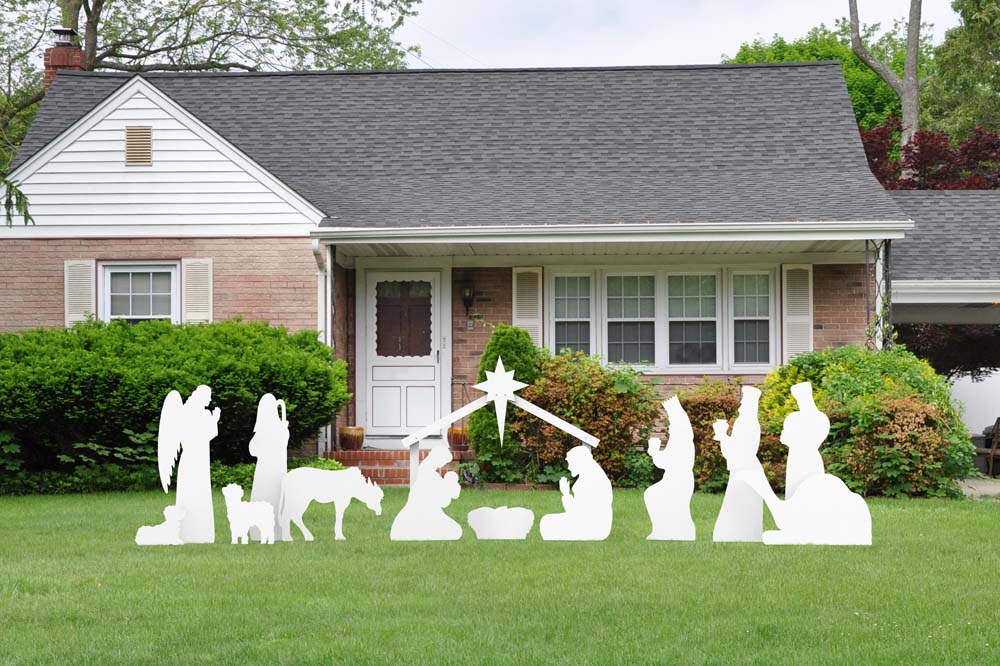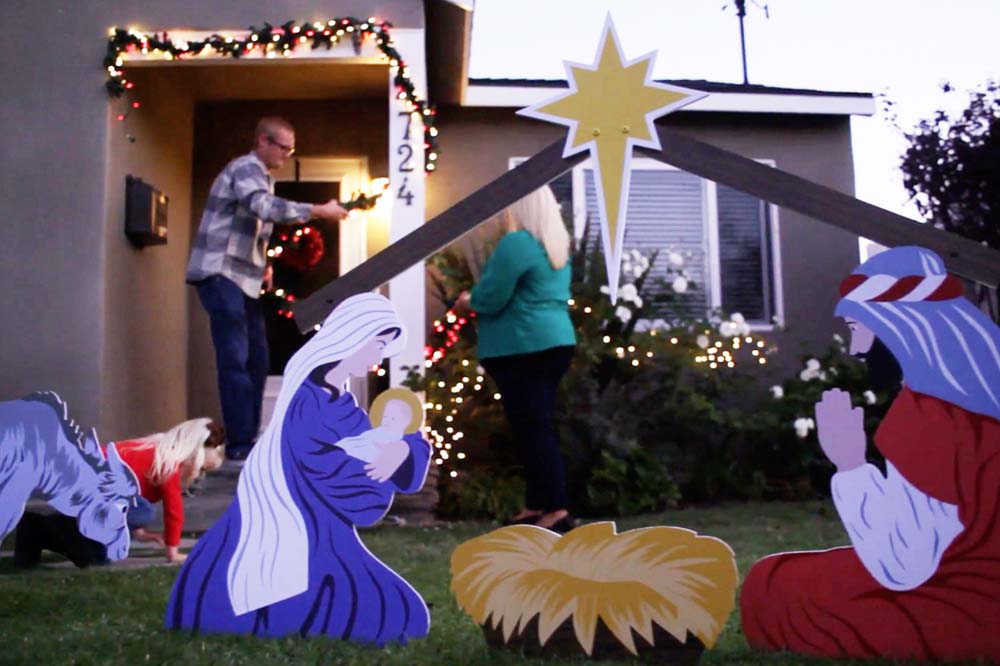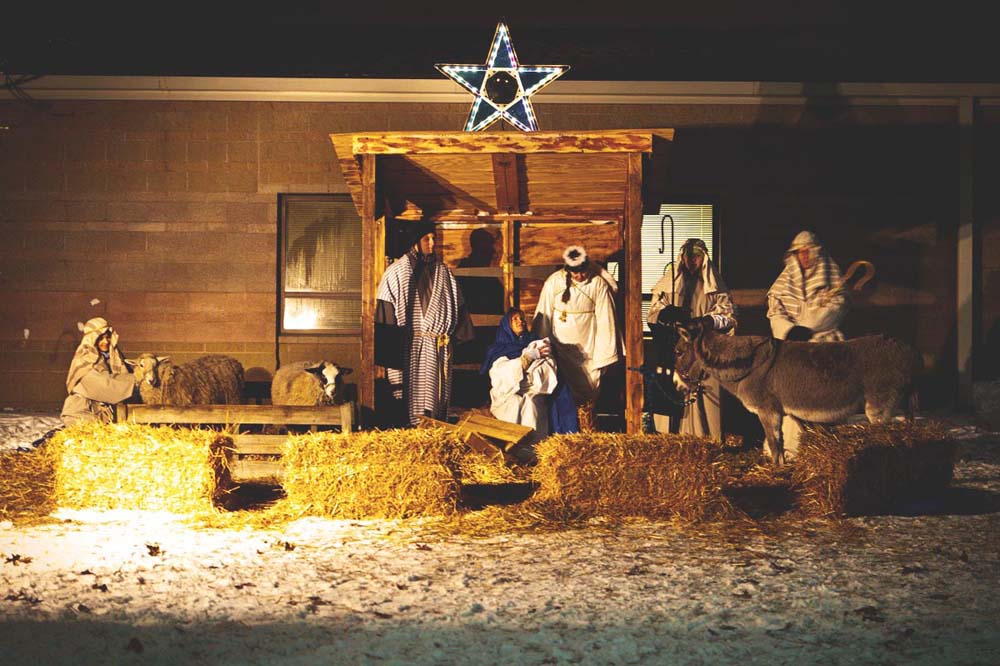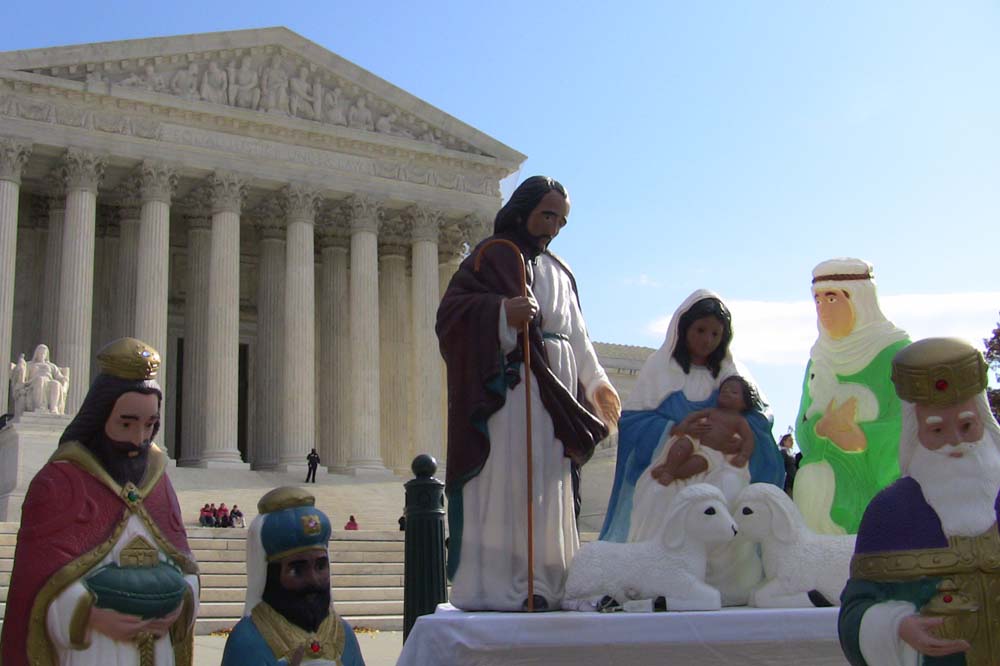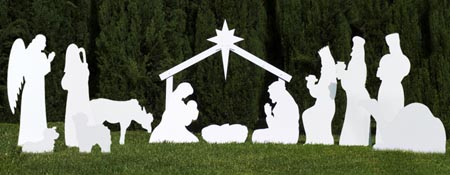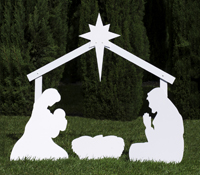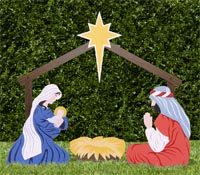Saint Francis and the Origin of the Creche

If a nativity scene is an important part of your family’s Christmas, you already are familiar with this lovely and meaningful way to honor the birth of Christ. You may not know, however, that Saint Francis of Assisi is credited with popularizing the crèche back in the 13th century.
St. Francis of Assisi (c 1182-1226) was an Italian friar and preacher who founded the men’s Order of Friars Minor (commonly called The Franciscans), the women’s Order of Saint Clare, the Third Order of Saint Francis and the Custody of the Holy Land.
After living a life of luxury as a youth, St. Francis, who was the son of a successful cloth merchant, claimed he heard the voice of God commanding him to rebuild the Church and to live a life of poverty. He then decided to devote his life to the service of God.
Canonized just two years after his death, St. Francis today is the patron saint of animals and of the natural environment.
Francis’s biographers tell us that Christmas held special meaning for the monk, and he celebrated the birth of Christ with great joy. He wrote a number of Christmas hymns in Latin and in Italian, including “Psalmas in Nativitae.”
In 1223, about three years before his death, St. Francis had transformed a mountainside cave in the Italian village of Greccio into a hermitage. According to The Life of St. Francis of Assisi by Saint Bonaventure, a Franciscan monk, St. Francis requested permission from Pope Honorious III to set up a representation of the birth of Jesus in the cave.
In his book The Christmas Crèche, Matthew Powell writes, “The saintly friar did see clearly the need to visualize in a tangible manner the events surrounding Christ’s birth. He knew the need people have to see, and not just to hear about, the sacred events of their salvation.”
Powell explains that St. Francis asked papal permission because he knew of Pope Innocent III’s letter that expressed the Vatican’s displeasure with the religious dramas of the time.
Mystery plays, also known as miracle plays, were a popular form of entertainment in Europe. These plays, originally performed in churches and then in town squares and other public places, often reenacted Bible stories. Since church services at the time were conducted only in Latin, the dramatizations were an opportunity for laypeople to learn about the Bible. However, some of the plays veered away from the Scriptures, focusing more on the value of entertainment.
It was St. Francis’s intention to re-create the atmosphere of the birth of Christ as closely as possible. According to St. Bonaventure, St. Francis was determined to keep the first nativity a solemn occasion “lest he should be accused of lightness or novelty.”
St. Francis received permission from the Pope, and he planned his special service for Christmas Eve in Greccio, Italy, which is about halfway between Rome and Assisi. Interestingly, the word “crèche” is most likely a French derivative of Greccio, which is pronounced “Grecho.”
St. Bonaventure writes, “Then he [St. Francis] prepared a manger, and brought hay, and an ox and an ass to the place appointed. The brethren were summoned, the people ran together, the forest resounded with their voices, and that venerable night was made glorious by many and brilliant lights and sonorous psalms of praise.”
Accounts are unclear whether a live baby or a wooden or plaster representation of Christ was used in first Greccio nativity scene, but accounts are clear that live cow and donkey were there at the cave along with a live Mary and Joseph.
St. Bonaventure describes the scene this way, “The Saint stood before the crib and his heart overflowed with tender compassion; he was bathed in tears but overcome with joy. The Mass was sung there and Francis, who was a deacon, sang the Gospel. “
Using the manger as his alter, Francis preached to the people about the birth of Jesus, referring to Him as the “the babe of Bethlehem.”
The following Christmas, the people of Greccio and the surrounding area reconstructed the place of Jesus’ birth in other caves and stables, and the nativity tradition began to grow and spread. There were even claims that original elements, such as hay, of the 1223 nativity cause miraculous healings.
Although some historians credit St. Francis with creating the first crèche, scholars such as Powell and Nesta De Robeck instead stress his influence on the tradition rather than his creation of it.
“It is impossible to credit the Christmas crèche to any one person or event,” writes Powell. “It would be more accurate to say that the crèche was the result of several influences – that it was a hybrid or assimilation that developed gradually.”
However, Powell does emphasize the beloved friar’s contributions. “What Francis did do was to spark a renewed devotion to the Nativity and special devotion to the Infant Jesus.”
In her book The Christmas Presepio in Italy, De Robeck writes, “St. Francis brings us to a turning point in the history of the presepio (crèche) for, though popular tradition is mistaken in thinking of him as its originator, nevertheless it was he who took the old custom and gave it the stamp of his own irresistible genius.”
De Robeck goes on to say that, with the 1223 crèche, St. Francis presented the Gospel in a way everyone could understand. “The most lettered of men could understand his [Francis’s] presepio as well as any doctor of theology,” she writes. “His realism made the Nativity of the Eternal Word as real to those Umbrian peasants as the birth of their own children; he gave into the arms of his followers that most precious of all babies, the Bambino Gesu.”
Powell gives Francis this deep praise, “A new spring of poetic imagination had been released, and its source stood Francis.”
This Christmas, as you set up and display your outdoor nativity scene or tabletop crèche, take a moment to reflect on the humble St. Francis and the tangible way he gave us to celebrate the birth of Christ.
Sources
Powell, Matthew. The Christmas Crèche: Treasure of Faith, Art & Theater. Boston: Pauline & Media, 1997. Print.
Robeck, Nesta De. The Christmas Presepio in Italy. Florence: Giannini, 1934. Print.
http://www.ofmqc.ca/eng/francis/christmas.htm
http://www.catholiceducation.org/en/culture/catholic-contributions/st-francis-and-the-christmas-creche.html


